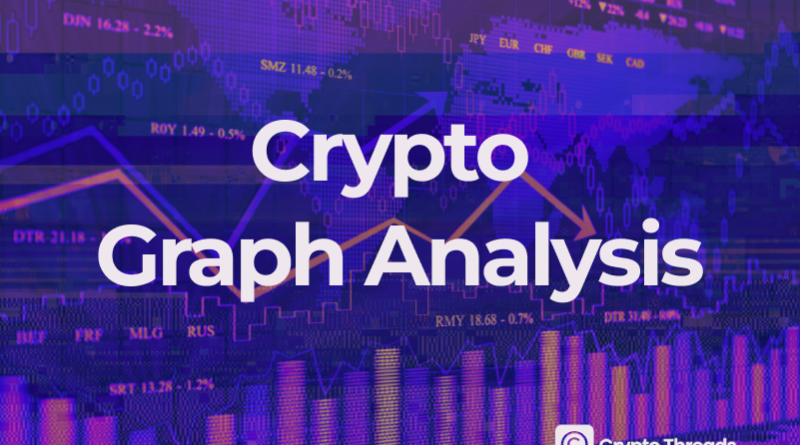Crypto Graph Analysis: Key Trends you can Spot on Charts
Navigating the world of cryptocurrency trading can feel like deciphering a new language, especially when you’re faced with a barrage of charts and graphs. However, these visual representations are powerful tools that, once understood, can significantly enhance your trading strategies. This article will guide you through the essential aspects of crypto graph analysis, focusing on the key trends you can spot on charts. By learning to identify these trends, even beginners can start to make more informed decisions in the dynamic crypto market.
Before we dive into spotting trends, it’s crucial to understand the basics of reading crypto charts. For a comprehensive guide, you can refer to “How to Read Crypto Charts: A Timeless Guide to Mastering Technical Analysis“. This resource will lay the groundwork for understanding chart types, timeframes, and basic indicators, which are essential for effective trend analysis.
Key Trends in Crypto Charts
In crypto graph analysis, identifying trends is fundamental. A trend is the general direction in which the price of a cryptocurrency is moving. There are three primary types of trends: uptrends, downtrends, and sideways trends.
Uptrend
Uptrend, a series of higher highs and higher lows on a chart, indicating a sustained increase in price and positive market sentiment. Key features: Higher highs, higher lows, bullish market direction.
An uptrend is characterized by a series of higher swing highs and higher swing lows on a chart. This means that each successive peak and trough is higher than the previous one, indicating that the price is generally moving upwards. An uptrend suggests increasing buying pressure and positive market sentiment.

How to identify an uptrend:
#Step1 – Visual Inspection: Look at the chart and see if the price is generally moving upwards.
#Step2 – Higher Highs and Lows: Confirm if each subsequent high point (peak) and low point (trough) is higher than the previous one.
#Step3 – Trendlines: Draw a trendline connecting the series of lows. In an uptrend, this trendline will slope upwards and act as a potential support level.
Downtrend
Downtrend is a series of lower highs and lower lows on a chart, signaling a sustained decrease in price and negative market sentiment. Traders can notify a downtrend by looking at key features such as lower highs then lower lows and a bearish market direction. Each peak and trough in this instance is lower than the one before it, indicating a general decline in price. Growing selling pressure and unfavorable market sentiment are signs of a decline.

How to identify a downtrend:
#Step1 – Visual Inspection: Observe if the price is generally moving downwards.
#Step2 – Lower Highs and Lows: Check if each subsequent high point and low point is lower than the previous one.
#Step3 – Trendlines: Draw a trendline connecting the series of highs. In a downtrend, this trendline will slope downwards and act as a potential resistance level.
Sideways Trend (Consolidation/Range-bound)
A sideways trend, also known as consolidation or a range-bound market, occurs when price movement is confined within a horizontal range, reflecting a balance between buying and selling pressure and signaling market indecision. During this phase, the price fluctuates within a defined range without a clear directional trend, often indicating a period of accumulation before a potential breakout.
In a sideways trend, there are no significant higher highs or lower lows; instead, the price moves between established support and resistance levels as neither buyers nor sellers gain full control of the market.

How to identify a sideways trend:
#Step1 – Visual Inspection: Notice if the price is moving horizontally without a clear upward or downward direction.
#Step2 – Horizontal Range: Identify clear horizontal support and resistance levels that the price is bouncing between.
#Step3 – Lack of Higher Highs or Lower Lows: Observe the absence of consistent higher highs and higher lows (uptrend) or lower highs and lower lows (downtrend).
Advanced Trend Analysis
Beyond the basic trends, several concepts and tools can refine your trend analysis and provide deeper insights into market dynamics.
Support and Resistance
Support is a price level where buying pressure is strong enough to outweigh selling pressure, potentially stopping a price decline and leading to a rebound. It acts as a price floor, an area where buyers show interest, and a possible point of reversal.
Resistance is a price level where selling pressure exceeds buying pressure, potentially halting a price increase and causing a pullback. It serves as a price ceiling, an area where sellers step in, and a potential turning point.
Support and resistance are fundamental concepts in technical analysis. Support levels represent areas where demand is strong enough to prevent further declines, while resistance levels indicate areas where supply is sufficient to cap price increases. These levels are not always exact lines but rather zones that can fluctuate slightly within a price range.

Identifying Support and Resistance:
#Step1 – Historical Price Action: Look for price levels where the price has previously stalled or reversed direction.
#Step2 – Swing Highs and Lows: Swing lows often act as support, and swing highs often act as resistance.
#Step3 – Volume: High volume at a specific price level can indicate a strong support or resistance zone.
Trendlines
A trendline is a line drawn on a chart that connects a series of swing highs or swing lows, providing a clear visualization of a trend’s direction and strength. It serves as a dynamic guide to market movement, helping traders identify potential support and resistance levels.
Trendlines are used to connect swing highs in a downtrend and swing lows in an uptrend, offering a visual representation of market trends. In an uptrend, a trendline acts as dynamic support, while in a downtrend, it functions as dynamic resistance.

Drawing and Using Trendlines:
Uptrend Trendline: Connect at least two consecutive swing lows with a straight line. Ideally, the trendline should touch or come close to multiple lows.
Downtrend Trendline: Connect at least two consecutive swing highs with a straight line. Similar to uptrends, the trendline should ideally touch or come close to multiple highs.
Trendline Breaks: A break below an uptrend trendline can signal a potential trend reversal or weakening. Conversely, a break above a downtrend trendline can suggest a potential trend reversal or strengthening.
Chart Patterns
Chart Patterns are distinct formations on price charts that indicate potential future price movements, relying on historical trends and market psychology. They help traders identify shifts in supply and demand, offering insights into possible breakouts or reversals.
Chart patterns are formed based on past price action and reflect market sentiment. Traders use these recognizable shapes to anticipate price direction. Some of the most common chart patterns include:





Learning to recognize these patterns can provide valuable insights into potential trend continuations or reversals. Further exploration into these patterns will be beneficial for advanced crypto graph analysis.
Volume and Trend Confirmation
Volume plays a crucial role in confirming the strength and reliability of trends, as it reflects market participation and the intensity of price movements.
Volume refers to the total quantity of a cryptocurrency traded within a specific period. It serves as an indicator of market activity, helps confirm trend strength, and provides insight into liquidity.
In a strong uptrend, volume should generally rise as the price moves higher and decline during pullbacks, signaling sustained buying interest. High volume on up days and lower volume on down days suggests strong demand driving the trend. Conversely, in a downtrend, volume should increase during price drops and decrease during rallies, indicating strong selling pressure.
A trend with low volume may be weak or unsustainable. Volume acts as a confirmation tool, adding credibility to the trends observed on crypto charts.
Practical Tips for Spotting Trends
To effectively spot trends in crypto charts, consider these practical tips:
- Start with Longer Timeframes: Begin your analysis on longer timeframes like daily or weekly charts to identify the primary trend. Longer timeframes filter out short-term noise and provide a clearer picture of the overall market direction.
- Use Multiple Timeframes: After identifying the trend on a longer timeframe, zoom into shorter timeframes (e.g., 4-hour, 1-hour) to refine your entry and exit points. This multi-timeframe analysis helps in getting a comprehensive view.
- Combine Trend Analysis with Other Indicators: While trend analysis is powerful, combining it with other technical indicators like Moving Averages, RSI (Relative Strength Index), or MACD (Moving Average Convergence Divergence) can provide additional confirmation and improve your analysis accuracy. You can learn more about such indicators from resources on technical analysis.
- Practice and Patience: Like any skill, mastering crypto graph analysis takes practice. Spend time regularly analyzing charts, identifying trends, and observing how prices react to trendlines and support/resistance levels. Patience is key – not every chart will present clear trends, and sometimes the best action is to wait for a more defined setup.
Conclusion
Crypto graph analysis is an indispensable skill for anyone looking to navigate the cryptocurrency markets effectively. By understanding how to identify key trends – uptrends, downtrends, and sideways trends – and utilizing tools like trendlines, support and resistance, and volume analysis, you can gain a significant edge in your trading decisions. Remember to continuously learn and practice, and always combine your analysis with robust risk management strategies. The crypto market is dynamic and ever-evolving, but a solid foundation in chart analysis will serve you well in identifying opportunities and navigating its complexities.



